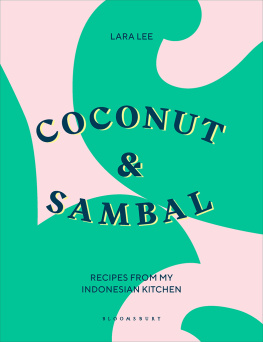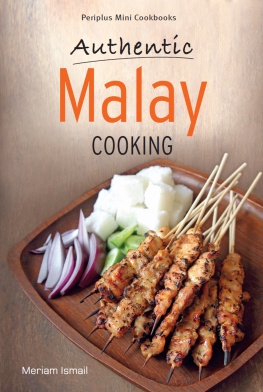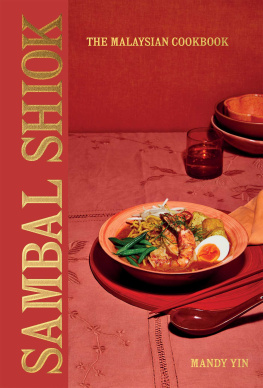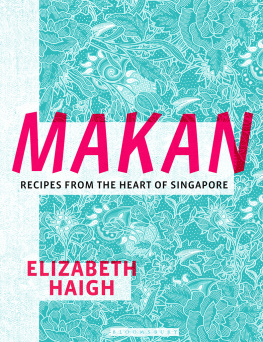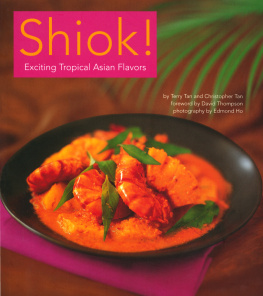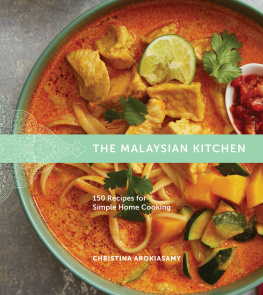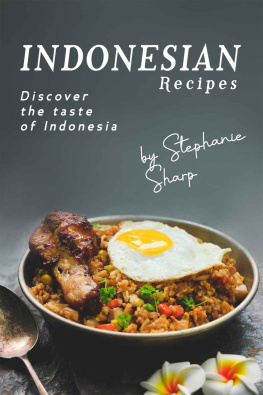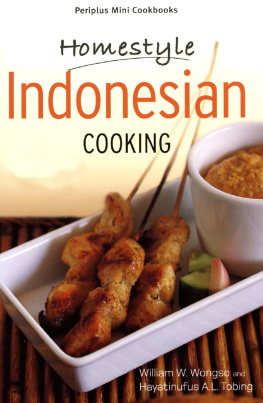
For Nick and Jonah. Life with you is the best adventure.


ACROSS THE TIMOR SEA
The first time I watched the sky bleed tones of orange and red as the sun set over the sea in my fathers home town of Kupang, Timor, it struck me as a moment of coming home but to a place I had never been before. A bustling collective of food vendors dotted the shoreline, the smoke from their coal and wood fires blurring the glowing horizon, the fragrance of lemongrass, kaffir lime and garlic filling the air. The pier, where local fishermen waited for their catch of the day to bite, was stained with splashes of black, the last ink squirts of life from squid and cuttlefish attempting to escape their captors. Surrounding the pier were the winding narrow streets that made up the old town, home to an eclectic mix of worn, tiled and rainbow-coloured terraces. There, where shops lined the ground floor with the owners homes perched above, was my grandmothers house, the place where my story begins.
My earliest memories of Indonesia occurred outside of it, across the Timor Sea and over land in Sydney, Australia. My family and I started visiting Indonesia only when I reached adulthood; before that, my grandmother Margaret Thali, who we called Popo, brought her Indonesian home to Sydney when she came to live with us. When we were young girls, my mother would dress my sister and me in batik on special occasions: vibrant, wax-patterned dyed fabric that showcased the intricate handiwork of Indonesian artisans. It was a gift to us from Popo, who wanted to clothe us in our heritage. Indonesian folk music would play on the record player, breathing melodies called keroncong. Our living room was filled with honeyed vocals, ukuleles, flutes and guitars; songs of lost loves and Indonesian island life that put sand between your toes.
My childhood mealtimes were filled with sausage rolls and peanut sauce not a classic Indonesian combination, but one that sums up the influence of growing up with an Australian mother and a Chinese-Indonesian father. Popos recipes wove themselves seamlessly into our repertoire of recipes and onto our dining table. The usual Australian fare of sausages, steaks and salads cooked on the barbecue by my parents was joined by unmissable chicken satay basted in kecap manis (sweet soy sauce) and lime. I remember watching Popo grinding the ingredients for her creamy peanut sauce to a paste before she generously drizzled it over vegetables and boiled eggs for her : cubed pork belly bubbling in a rich bath of garlic, shallots, chilli and kecap manis. Back then I was too young to learn her recipes, but the flavours of Popos food left an impression that stayed with me long after she moved back to Timor and later passed away.
Many years later, when I first stepped inside Popos vacated home in Kupang, I felt an unanticipated sense of our kinship. Our parallel lives, set decades apart, unveiled themselves first through our shared love of colour as I walked the brightly painted hallways of the family home where my father and his three sisters spent their early years. Her kitchen was every shade of blue imaginable; an azure stair handrail matched the colour of the tiles, the walls were painted a deeper cobalt blue, a blue hosepipe coiled around a blue hook on the wall. Old buckets and utensils left scattered across the room boasted further shades of blue. On the ground floor was a hallway entirely coloured pink, the floor above it purple, her bedroom lime green. It was then clear that our shared passion for food was matched by our fondness for colour.
Old black-and-white photos decorated the walls, some of my grandfather, a mirror image of my father. A framed portrait of Popo as a young woman sat atop one of the crumbling walls, the light from the window illuminating her face. Nicknamed the rose of Kupang, Popo was a great beauty who had many suitors for her hand, but it was my grandfather, Ang Tju Liong, who eventually won her heart. Tall, handsome, well educated and with a strong backhand in tennis, he was also the first man in Kupang to own a motorbike, no less than a Ducati. Popo and Liong met and fell in love around the time the Japanese invaded Timor during World War II, and after a short courtship they married.
When Popo was just 36 years old, my grandfather passed away suddenly from a heart attack. A young widow with four children to support, she taught herself to cook using recipe books her brother had brought from East Java to occupy her in her mourning. Popo began first to sell bread and then later cakes, known as kue in Indonesian, transforming her talent for cooking into a livelihood by opening a bakery on the ground floor of the four-storey family terrace. To this day, so many relics of her life remain in that home: her bed and dressing table, a chest of old photo albums, a collection of ornaments ranging from porcelain cats to Jesus plates and shelves of near-forgotten books. From these shelves, Popos old recipe books, yellowed with age and stained with splashes of oil from years of use, were saved by my aunties. Indonesians typically pass their recipes down orally, from generation to generation, and while Popo taught her recipes to my aunties in this way, she also kept a written record of the recipes she used in the bakery.
It was not until I took up cooking as a profession that my desire to trace my familys culinary heritage became a mission. I longed for the funny coloured cakes Popo had made for me in my childhood, and the sweet and spicy sauces that stuck to my little hands at the end of family meals. I embarked on a journey that took me from the west coast of Sumatra to Timor in the east, where our familys story began. I heard the tales of our family history told by my aunties, cousins and great aunties alike. Through the pages of her recipe books, the flavours of Popos life were recreated by my aunties hands as we measured, rolled, mixed and created meals together. It was Popos food that united us, and over food that we laughed and remembered. This joy compelled me to extend the search beyond my own family and to learn the recipes of the many other wonderful people I encountered as I travelled across the Indonesian archipelago in pursuit of culinary stories, of recipes passed down through generations. I was invited into strangers kitchens, where I was treated as a family member, and left hours later having been gifted recipes that had never before been shared with outsiders. This book catalogues the recipes I learnt in the far-flung places I visited and all those family culinary treasures born in Popos house long ago in Kupang, across the Timor Sea.

